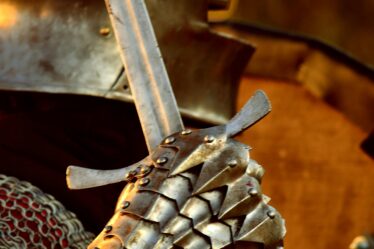

1. The Papal Palace of Florence: A Hidden Historical Gem
Not many people know that Florence once had a papal palace dedicated to hosting popes and cardinals for extended stays. This historic residence, often referred to as the “Lateran of Florence,” played a crucial role in ecclesiastical affairs. While in Rome, the primary papal residence was the Lateran Palace next to the Archbasilica of St. John Lateran, Florence also had a similar structure. This palace stood where the former School for Non-Commissioned Officers of the Carabinieri now exists on Via della Scala.
The first pope to use this residence was Clement V, who stayed in Florence for about a year and a half. This occurred during a complex historical period for the Catholic Church, marked by the Western Schism. At the time, three popes simultaneously claimed authority: Gregory XII in Rome, Benedict XIII in Avignon, and John XXIII in Pisa. Eventually, the schism was resolved at the Council of Constance, leading to the election of Pope Oddo Colonna. He took the name Martin V in honor of Saint Martin, whose feast day coincided with his election.
For more insights into Florence’s religious history, visit Florence’s Religious Heritage.
2. The “Lateran of Florence” and Its Papal Legacy
During Clement V’s stay in Florence, the city’s Episcopal See was elevated to an Archiepiscopal See. Additionally, the pope granted the “Golden Rose” honor to Francesco di Taddeo Gherardini and consecrated two of Florence’s most important churches: the Basilica of Santa Maria Novella and Sant’Egidio of Santa Maria Nuova. The papal apartments were located on the first floor of the palace, positioned between the present-day Piazza della Stazione (formerly the convent’s gardens) and Via della Scala, in the western and partially northern sections of the Great Cloister.
To enhance the grandeur of this residence, the Republic of Florence commissioned its construction under the direction of Lorenzo Ghiberti between 1418 and 1420. Known as the “Lateran of Florence,” the palace was richly decorated, reflecting the city’s importance as a political and religious center.
3. The Marzocco: A Symbol of Florence’s Papal Influence
One of Florence’s most iconic symbols, the Marzocco, was commissioned by the Florentine Republic to commemorate the visit of Pope Martin V to the city. Initially, it was intended to adorn the grand staircase leading to the papal apartments in Santa Maria Novella. Over time, the statue became an emblem of Florence’s identity. Designed by Donatello, the Marzocco represents Florence’s independence and strength, embodying the city’s enduring relationship with the papacy.
For those interested in seeing this historic piece, a replica of the Marzocco stands in Piazza della Signoria, while the original is housed in the Bargello Museum. Learn more about the Marzocco at the Bargello Museum.
4. The Papal Palace of Florence: A Residence for Popes and Diplomats
This grand palace also accommodated other notable figures, including Pope Eugene IV, who resided there for nine years, along with other delegates attending the Council of Florence (1439). Within these walls, the Patriarch of Constantinople, Joseph II, passed away and was later buried in the convent.
In addition, the Medici popes, Leo X and Clement VII, stayed in this residence during their visits to their native city. These historical events highlight Florence’s crucial role in ecclesiastical affairs and diplomacy during the Renaissance.
Although largely forgotten today, Florence’s papal palace was once a key center of power. It hosted influential figures who shaped the course of history. Explore Florence’s hidden papal history here.



